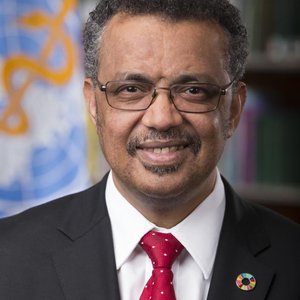Education and
Child Marriage
Key message
Key challenges
- Less educated girls who marry as children contribute great economic costs to governments. If child marriage was ended and girls were in school, governments could save up to US$17 billion per year by 2030.
(World Bank, 2017) - Girls with no education are up to three times more likely to marry early than those with a secondary education. Over 60% of girls with no education marry before the age of 18.
(Girls Not Brides, 2020) - If efforts to provide universal education and protect girls from child marriage are not accelerated, 950 million girls will be married in childhood by 2030. To eliminate child marriage by 2030, global progress needs to be 12 times faster than the rate over the past decade.
UNICEF, 2014 UNICEF, 2018 - Child marriage reduces girls’ expected earnings in adulthood by 9%. The World Bank estimated that lost earnings associated with child marriage for 15 high prevalence countries could reach US$26 billion in 2015.
(World Bank, 2017) - The COVID-19 pandemic jeopardizes progress made in reducing child marriage. An estimated ten million additional girls are at risk of early marriage over the next decade due to the pandemic. School closures have increased the risk of child marriage by 25% per year.
(UNICEF, 2021) (UNICEF, 2021) - Child marriage contributes to lower educational attainment for girls. In Uganda, marriage has a negative impact on school enrolment and attainment – the earlier a girl marries, the more likely it is she will drop out of school early.
(Male et al, 2023) - The rates of child marriage is especially high in poor countries. Globally, West and Central Africa have the highest rates of child marriage, with over 4 in 10 young women getting married before age 18.
(UNESCO, 2023)
Make the case
- Ensuring that girls complete secondary school would significantly reduce the level of child marriage. In all regions of the world, girls with higher levels of education are less likely to marry as children. If girls were to complete secondary school the level of child marriage could fall by two thirds, and if they continue on to higher education this could drop by more than 80%.
(UNICEF, 2022) - Keeping girls in school would reduce pregnancies before the age of 18. 75% of women who have their first child before the age of 18 did so because of child marriage. Early childbearing increases the risk of maternal mortality due to a lack of physical maturity, for example.
(Wodon et al, 2018) - Simply providing school materials can reduce child marriage. In Ethiopia, providing school materials increased enrolment and reduced the likelihood of Ethiopian girls being married as children by 90%.
(Erulkar et al., 2017) - Girls who are educated and not married as children are healthier. Evidence shows a positive relationship between increased girls’ education and improved SRHR outcomes, including higher age of marriage, greater contraceptive use, higher age for birth of first child, and increased use of health services.
(Girls not Brides, 2023) - Literacy reduces the chances of a girl being married as a child. In South and West Asia, girls who are illiterate are three times more likely to be married before age 15 than girls who are literate.
(EFA GMR, 2014) - Reducing child marriage provides savings for education. In Niger, the country with the highest prevalence of child marriage, ending child marriage and early child birth in 2015 would have created US$327 million in savings to the education budget by 2030.
(World Bank, 2017)
Key stories
Girls' Clubs in Uganda
In Uganda, girls’ clubs run by BRAC Uganda have demonstrated success in preventing child marriage. Some 1,500 clubs in Uganda offer games, music, sex education, financial literacy, vocational training, and access to microfinance for young women trying to become entrepreneurs. Girls who have been members of the clubs for two years are 58% less likely to marry early. (World Bank, 2017)
Key opinions

Kevin Watkins
Former CEO of Save the Children
The COVID-19 pandemic has created the biggest education emergency of our lifetime. Schools not only provide children with a space to learn. For many children, school also keeps them protected from harm - where they can be referred to child protection and mental health services. But with school closures, children are missing out on these essentials. The protection schools provide is particularly important for the most vulnerable children, such as children living in conflict-affected areas or refugees. These children are at risk of being recruited into armed groups; being forced to do hazardous and exploitative work; and being forced into marriage and early pregnancy.

Dr. Tedros Adhanom Ghebreyesus
Director-General of the World Health Organization
Education and health go hand in hand. Children who have gone to school tend to have better health outcomes, can better access health services, including family planning and immunization, and have more earning potential. Schooling also helps to reduce violence, childhood marriage, and teen pregnancy. Education saves lives and improves livelihoods.
Key talking points
- Globally, 650 million girls and women today were married when they were children. Half of these are in India, Bangladesh, Nigeria, Ethiopia and Brazil.
- At the current rate of progress, it will take more than 100 years to eradicate child marriage for girls.
- An additional 10 million girls could be forced into child marriage, as COVID-19 disrupts global efforts to end this practice.
- The level of education a girl attains is the strongest predictor of the age at which she will marry.
- Providing universal secondary education would have the single biggest impact on ending child marriage.
Share This Resource
Similar Themes



